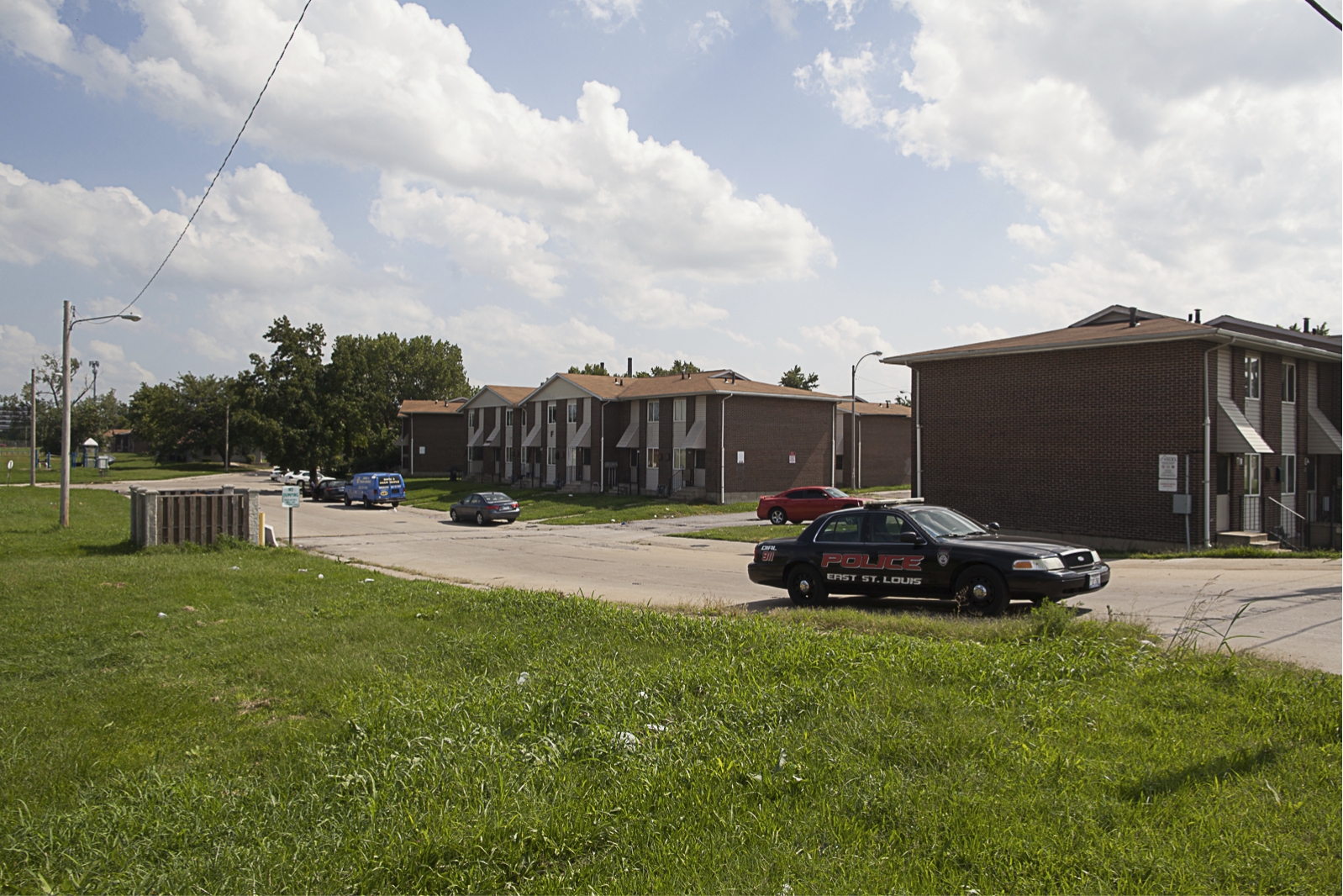PLACE
East St. Louis was once a thriving riverside industrial town, but its fortunes unraveled in the middle of the last century, when industry left and the residential tax base followed. Throughout the city, rundown, abandoned lots form a backdrop to poverty and to crime. Yet while living in East St. Louis is not easy, its people persist. They work, play and carry on, revealing a decidedly determined side of the American Identity.
WORK IN PROGRESS
Louisiana Highway 1 is to Louisiana what Broadway is the island of Manhattan: a top-left-to-bottom-right byway that traverses a number of neighborhoods of blurred boundaries. Starting in the northwest corner of Louisiana – a “tri-state” area it forms with Arkansas and Texas – the route runs sequentially through oil and timber country, cattle and livestock ranches, pecan and cotton plantations, a sizable chunk of America’s sugar industry, and ultimately to the fishing fleets of the Gulf. Take a sneak peek of the work in progress.
ROADSIDE ASSISTANCE
Next up: families. We are looking to start creating some photographic journals beyond the Place and Cross Section journals we have been producing so far. Upcoming journals will focus on the American family, and so we would like to spend some time with a few. The goal is to capture a "day in the life" of the American Family. If you know one that would like to open up a slice of their lives, let us know.
Also, we are still looking for some introductions to anyone who:
- Lives or works in the "Jackson Purchase", the arrow-tip of western Kentucky.
- Owns, manages or works for a used car dealership.
- Builds, sells or has recently moved into a suburban/exurban/rural subdivision.
Drop us a line at editors@interstatemagazine.com.
INTRODUCTION TO RICHARD AVEDON, A PHOTOGRAPHER YOU SHOULD KNOW
Julian Bond and SNCC Members, 1963
Richard Avedon's photographic career began inauspiciously in the U.S. Navy, where he was tasked with creating photographs for ID cards. "I must have taken pictures of one hundred thousand faces before it occurred to me I was becoming a photographer," he remembered in an interview. After the Navy, Avedon quickly found his way into the world of high fashion photography, in the early days photographing principally for Harper's Bazaar. His fashion photographs, often quirky and striking, paved the way for the later creative portraitists like Annie Leibovitz and Albert Watson.
Less well known than his fashion work, perhaps, is Avedon's 1963 work traveling through America, capturing a series of photos that addressed, according to one commentator, "how Americans understand race relations, civil rights and their own identities, and how they see those of others." Among other subjects, Avedon aimed his camera at civil rights notables James Baldwin (who worked with Avedon), Student Nonviolent Coordinating Committee founder Julian Bond and segregationist Alabama governor George Wallace. This 1963 body of work resonantly connects the past and present in a way that is beyond the reach of fashion photography.
You can find more information on Avedon here, and a discussion of Avedon's and Baldwin's 1963 work here.
EDITOR'S NOTE: "STICKING OUT LIKE A SORE THUMB" – DETAINED IN EAST ST. LOUIS
East Saint Louis is in Illinois, just across the Mississippi River from the Saint Louis of Gateway Arch fame. It is a deflated, decaying former city, now more vacant than vibrant. Twice I traveled to the city to photograph it. Only once was I detained by police there. Read more here. Read more in a recent blog post.





